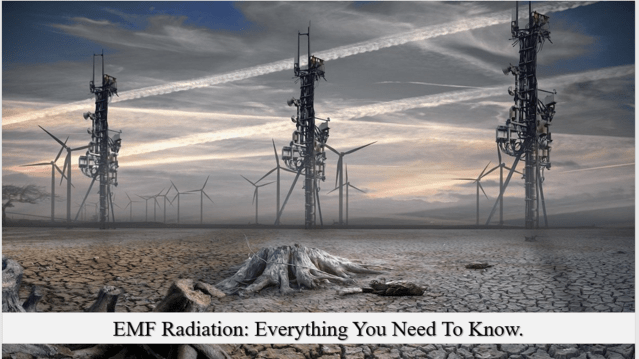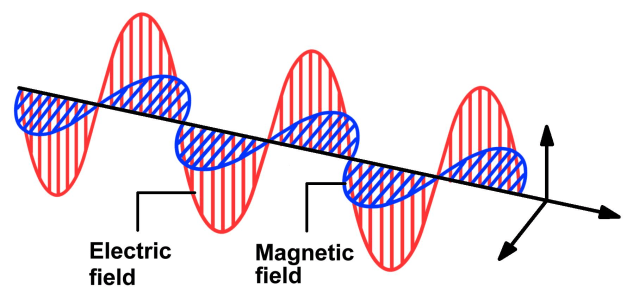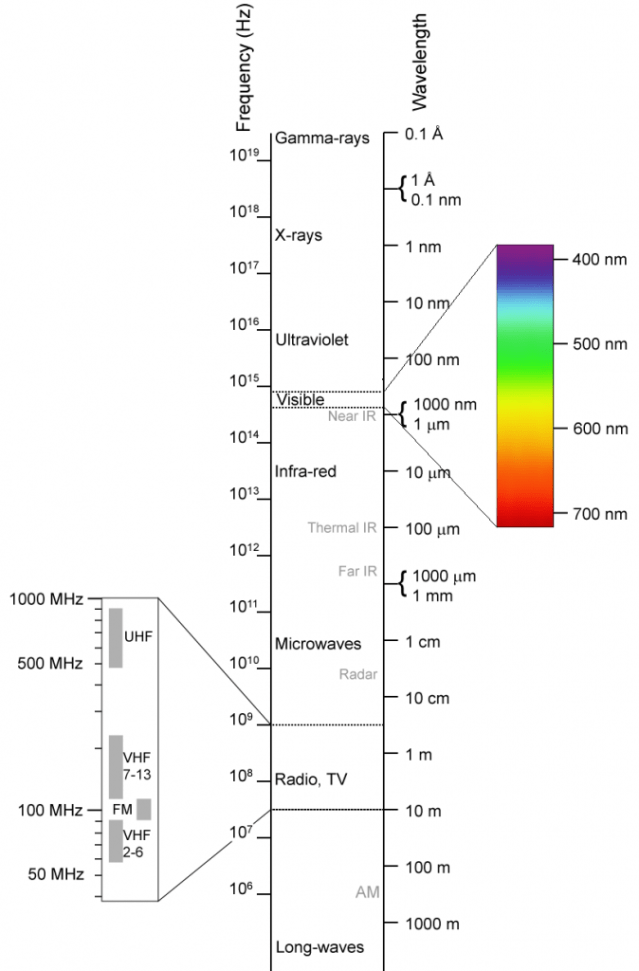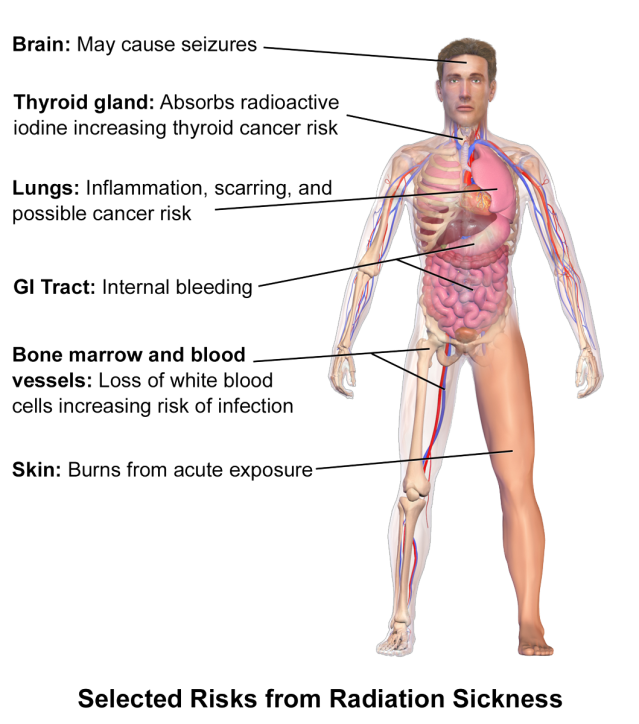EMF Radiation: Everything You Need To Know.

We are constantly surrounded by electromagnetic radiation from ionizing radiation and although we are being told by those with a vested interest that the radiation is limited in effect to the outer 1 cm of the body, (as if that is not bad enough), however, this is not true. According to studies, the effects can go deep into the human brain, on the heart and on hormone systems and due to their body size, it is insects, birds and children that are the most vulnerable to the dangerous effects. ( more of which can be found here.) Many of us may have questions as to how we can minimise the harmful exposure and dangerous effects.
Bonnie Collins, author of the book EMF Empowerment, believes that despite the ever increasing threat of EMFs, there are many ways to keep ourselves protected. Bonnie began researching the health effects of EMF Radiation in 2017, she says ” out of ” concern for the health and well-being of her family.” and adds that “This, has now turned into a mission to share my research with as many people as possible”
Bonnie has written a comprehensive guide with the aim to provide answers and insights which follows below which was originally published on Bonnie Collin’s website EMF Empowerment.
EMF Radiation: Everything You Need To Know
What started out as an intention to protect my family from the dangers of EMF radiation has turned into a mission to share my research with as many people as possible. Despite the ever-increasing threat of EMF, there are many ways to keep ourselves protected. Knowledge is power!

In our modern world, we are constantly surrounded by electromagnetic radiation, and it’s natural to have questions about its nature and potential risks. This comprehensive guide aims to provide answers and insights. We will delve into the definition of electromagnetic radiation, exploring its various types and their impact on the human body.
From ionizing radiation, which carries higher energy levels and potential risks, to non-ionizing radiation, which is generally considered less harmful, we will cover the full spectrum. By understanding the characteristics and effects of each type of electromagnetic radiation, you can make informed decisions about your exposure and take necessary precautions to ensure your well-being.
So, let’s embark on this enlightening journey and gain a deeper understanding of the electromagnetic world that surrounds us.
Understanding EMF Radiation
Electromagnetic fields (EMF) encompass the unseen force lines that radiate from electrical and wireless devices. EMF radiation is categorized into two types: ionizing and non-ionizing.
Ionizing radiation possesses high-frequency energy capable of ionizing atoms and molecules, potentially leading to harm to human cells and DNA. Examples of ionizing radiation include x-rays and gamma rays. In contrast, non-ionizing radiation is characterized by low-frequency energy and is generally regarded as less harmful.
It is emitted by everyday devices like cell phones, Wi-Fi routers, and microwaves. Understanding the distinction between ionizing and non-ionizing radiation aids in assessing potential risks associated with various devices and enables informed decision-making regarding our exposure to EMF radiation.
Electric vs Magnetic

Electric field radiation and magnetic field radiation are distinct fields that share certain characteristics and are often interrelated. While they differ in their origin and measurement, they both contribute to the broader understanding of electromagnetic fields.
Electric field radiation arises from any electrically charged particle, whether positive or negative. Positive charges attract particles, while negative charges repel them. The strength of an electric field is measured in volts per meter (v/m) and can be generated by natural phenomena, such as static electricity, or man-made electrical objects.
In contrast, magnetic field radiation is associated with magnets and the movement of electrical currents. If you have ever observed magnets repelling or attracting each other, you have experienced the influence of a magnetic field.
To visualize the magnetic field, placing iron particles over a magnet reveals flux lines that demonstrate the field’s intensity. These lines are closer together in stronger magnetic fields and farther apart in weaker fields. Magnetic field radiation is measured in milliGauss (mG).
Understanding the similarities and differences between electric and magnetic field radiation enhances our comprehension of the complexities of electromagnetic fields and their potential effects on the environment and living organisms.
Types of Electromagnetic Radiation
Electromagnetic radiation encompasses two primary categories:
- Ionizing radiation
- Non-ionizing radiation
Let’s delve into the distinctions between these categories and explore some common subtypes.
Ionizing vs Non-ionizing Radiation
Ionizing radiation possesses sufficient energy to dislodge atoms from their structure, making it potentially harmful as it can cause cellular damage.
Sources of ionizing radiation include X-ray machines, MRIs, nuclear bombs, and natural elements like uranium. It is even emitted by the sun. Types of ionizing radiation comprise gamma rays, X-rays, and UV rays.
On the other hand, non-ionizing radiation lacks the energy to cause cellular damage and is generally considered safe. However, it’s important to note that non-ionizing radiation has been associated with various health concerns. For instance, research has linked certain forms of non-ionizing radiation to miscarriages in pregnant women and an increased risk of glioma, a rare and fatal brain cancer.
Non-ionizing radiation is often referred to as EMF radiation and is generated by electronic devices, powerlines, cell towers, WiFi signals, microwaves, and solar panels, among others.
ELF-EMF vs RF-EMF vs microwave vs infrared
EMF radiation encompasses four distinct types:
- Extra-Low Frequency (ELF) EMF radiation
ELF-EMF radiation is emitted by power lines, electronic devices, and can be found in homes as dirty electricity. Frequencies range from 0 to 3,000 Hz, with common frequencies at 50 and 60 Hz. ELF-EMF radiation is classified as “possibly carcinogenic to humans” by the World Health Organization (WHO).
- Radiofrequency (RF) EMF radiation
RF-EMF radiation is generated by WiFi signals, cell phones and towers, smart devices, smart meters, and fitness trackers. It falls within the range of 20 kHz to 300 GHz. RF-EMF radiation shares the same classification as ELF-EMF radiation as “possibly carcinogenic to humans” by the WHO.
- Microwave radiation
Microwave radiation, also non-ionizing, includes frequencies between 1 and 100 GHz. It is produced by microwave ovens, radar systems, satellites, and vehicles with keyless entry. Exposure to microwaves can cause internal heating and severe burns.
- Infrared radiation
Infrared waves range from 300 GHz to 430 THz, bordering the visible spectrum. They are used in night-vision goggles, military and law enforcement devices, environmental inspections, and weather forecasting. In high doses, infrared radiation can lead to severe eye damage.

Different individuals may experience varying effects from non-ionizing radiation. Those with Electromagnetic Hypersensitivity typically experience symptoms from exposure to RF-EMF radiation. However, it’s worth noting that microwave frequencies can overlap with RF frequencies, meaning devices emitting microwaves could potentially induce similar symptoms.
Solar Radiation vs Man-made
Approximately eight percent of solar radiation belongs to the ionizing ultraviolet (UV) range of the electromagnetic spectrum, spanning from 30 PHz to 750 THz. UV radiation resides at the lower end of the spectrum, just below the visible range, and can cause significant damage to the skin in high doses. While it doesn’t penetrate the skin barrier, excessive exposure to UV rays can lead to skin cancer and sunburn. However, it can also contribute to Vitamin D production, offering some benefits.
In addition to UV radiation, sunlight also contains infrared radiation, which can cause eye damage and is not safe to stare at directly. Infrared radiation accounts for approximately 49.4% of the solar radiation reaching the Earth.
The remaining 42.3% of solar radiation falls within the visible spectrum, positioned between infrared and ultraviolet. This range, known as the Photosynthetically Active Range (PAR), is crucial for plant growth and photosynthesis.
Although manmade radiation can sometimes fall within the UV or infrared range, discussions about the dangers of EMF radiation mainly focus on ELF-EMF, RF-EMF, and microwave radiation. These types of radiation, occurring at lower frequencies, may have different effects on the body compared to higher frequencies. While it might be tempting to draw comparisons between solar radiation and manmade sources, they ultimately differ significantly.

What Does Radiation Do to Our Bodies?
It’s important to bear in mind that ionizing radiation possesses sufficient energy to induce atom splitting, unlike non-ionizing radiation. As a result, these two types of radiation have distinct impacts on the body.
Ionizing Radiation
To grasp the impact of ionizing radiation, it is beneficial to familiarize oneself with the components of an atom. Atoms consist of protons, neutrons, and electrons, with the protons and neutrons forming the nucleus and the electrons orbiting around it. Each atom has a specific number of electrons. Ionizing radiation exerts a repelling force on an atom’s electrons, resulting in the splitting of the atom.
When this occurs in a DNA molecule or when a nearby atom strikes a DNA molecule, it is known as direct action. However, direct action accounts for only a small portion of the damage caused by ionizing radiation. Most of the damage is indirect, where the split atom collides with a water molecule (H2O) and causes the oxygen (O) portion of the molecule to separate.
Free radicals, which are unstable, constantly seek to rectify their electron deficiency. In the case of an oxygen atom, this process is referred to as oxidative stress. Oxidative stress has been linked to various health issues, including cancer and many age-related symptoms.
In small doses, radiation damage occurs gradually over time. The more exposure one has, the greater the risk of experiencing negative effects. However, in high doses, radiation can lead to radiation poisoning, a perilous and potentially fatal condition.
Symptoms of Radiation Poisoning

In cases of radiation poisoning, individuals may initially experience symptoms such as nausea and vomiting. The onset of these symptoms depends on the level of exposure, with high levels of exposure leading to more immediate symptoms, while lower levels may result in delayed onset.
Symptoms of radiation poisoning encompass a range of indicators, including confusion, disorientation, fainting, hair loss, weakness, internal bleeding, low blood pressure, and increased susceptibility to infection. It is crucial to understand that radiation poisoning does not occur through standard medical tests or procedures.
Most cases occur in the aftermath of events such as nuclear power plant meltdowns, atomic bomb detonations, or other situations involving high levels of radiation.
Long Term Effects of Ionizing Radiation Exposure
A wealth of knowledge about the lasting consequences of ionizing radiation exposure stems from the survivors of the Hiroshima and Nagasaki bombings during World War II. A comprehensive longitudinal study was conducted on a cohort of these survivors, providing valuable insights.
The study revealed that individuals who were young at the time of the bombings faced a substantial and probably radiation-related risk of developing cancer. Those who were older at the time of exposure also experienced an elevated cancer risk, although not to the same extent as the younger survivors.
This disparity could be attributed to the fact that children have thinner skulls, making them more vulnerable to the harmful effects of radiation.
Non-ionizing Radiation
Non-ionizing radiation poses significant health concerns, particularly when exposed to high levels. At such intensities, it can result in heat-related tissue damage by causing thermal heating and potentially leading to burns. However, most of our exposure occurs at lower doses, which can still have detrimental effects.
Even at smaller doses, non-ionizing radiation has been linked to various health issues. Besides the elevated risk of glioma and miscarriages, it may contribute to male fertility problems, heart tumors, and the development of Electromagnetic Hypersensitivity (EHS).
These health concerns are primarily associated with specific types of non-ionizing radiation, including RF, ELF, and microwave radiation. It is important to recognize and address the potential risks posed by these forms of radiation to safeguard our well-being.
Cancer and Radiation
Radiation therapy for cancer treatment employs a precise and localized approach to minimize the impact on healthy cells while targeting cancerous cells. Instead of indiscriminate exposure, radiation is carefully directed to the specific area affected by cancer.

When undergoing radiation therapy, the radiation is concentrated on the tumor site, either through external beams or internal sources such as oral or intravenous administration. By focusing the radiation in this manner, the rest of the body experiences minimal exposure.
The objective is to interrupt the proliferation of cancer cells, resulting in their demise, while minimizing harm to the neighboring healthy cells. This selective targeting allows radiation therapy to be an effective tool in cancer treatment, despite the association between radiation and cancer development. The precise delivery of radiation in therapy maximizes its benefits while minimizing potential harm to the patient.
How Much Radiation Are We Exposed to Compared to Our Grandparents?
When comparing life today to 50 years ago, it becomes evident that our exposure to electromagnetic radiation (EMF) has significantly increased. In the modern era, we are surrounded by a multitude of EMF-emitting devices, such as cell phones, laptops, tablets, smart appliances, and Bluetooth-enabled cars. City-wide WiFi connections further contribute to our constant exposure to WiFi signals, enhancing connectivity but also raising concerns about radiation exposure.
On the ionizing radiation side, routine dental X-rays and occasional medical procedures like MRIs add to our daily radiation exposure. It is undeniable that in today’s world, we encounter a considerable amount of radiation on a regular basis.
In contrast, back in 1970, cell phones were not yet prevalent, and people relied on incandescent light bulbs and non-internet-connected television sets. The internet itself had not even emerged. Consequently, the surge in non-ionizing radiation exposure over the past 50 years becomes apparent.
The significant advancements in technology and the proliferation of EMF-emitting devices have led to a substantial increase in our exposure to radiation in modern times.
How to Measure Radiation
Measuring ionizing and non-ionizing radiation requires different approaches. Ionizing radiation testing is typically conducted in specific situations, such as when there is suspicion of radon in a home. Homeowners can perform a radon test themselves and send the samples to a laboratory for analysis.
For non-ionizing radiation testing, an EMF meter capable of detecting RF and ELF-EMF radiation is recommended. The TriField TF2 is an affordable and reliable option that we often suggest.
Before using an EMF meter, it’s important to understand the units of measurement involved. EMF radiation consists of electric and magnetic fields, which are measured differently. The electric field is measured in volts per meter (V/m), while the magnetic field is measured in milliGauss (mG).
Additionally, the TriField TF2 employs another unit of measurement: milliwatts per square meter (mW/m2). This unit is used to measure RF frequencies. If you choose the TriField TF2, the manufacturer’s video provides valuable information on its usage.
To assess radiation levels in your home, take readings from multiple positions in each room. Pay close attention to high-traffic areas, especially the bedroom, as creating an EMF-free sleeping environment is crucial for your well-being.
Parting Thoughts
The potential risks of electromagnetic radiation to human health cannot be overlooked. By gaining a thorough understanding of this phenomenon, you can proactively minimize your exposure in your daily routines. To acquire comprehensive knowledge about protecting yourself and your loved ones from EMF radiation, we invite you to explore our comprehensive home safeguarding guide.
It offers valuable insights and practical steps you can take to create a safer environment, empowering you to prioritize your well-being in the face of this pervasive modern concern.
FAQs
I thought it’d be helpful to address some common questions about EMF Radiation. Here are a few FAQs to help you understand this topic better:
Q: What is EMF radiation?
A: EMF radiation refers to the fields produced by electrically charged objects. It includes both man-made and natural sources.
Q: Are all EMFs harmful?
A: Not all EMFs are harmful. The potential for harm depends on the frequency and intensity of the EMFs, with high-frequency, ionizing EMFs being the most harmful.
Q: How can I reduce my EMF exposure?
A: You can reduce your EMF exposure by maintaining a distance from EMF-emitting devices, limiting Wi-Fi use, and considering EMF shielding products.
Q: Are children more vulnerable to EMF radiation?
A: Some suggest that children, due to their developing systems, may be more vulnerable to the effects of EMF radiation. However, further research is needed to confirm this.
Q: Are EMF regulations sufficient?
A: Current regulations are based on the known effects
——————————————————————
More Helpful Sources from the Bonnie Collins EMF Empowerment Website.
EMF Protection – Learn about the products and strategies you can use to protect yourself from excess EMF exposure https://emfempowerment.com/category/emf-protection/
EMF Protection Products – https://emfempowerment.com/buyer-guides/
This article has been archived for your research. The original version from The Exposé can be found here.



